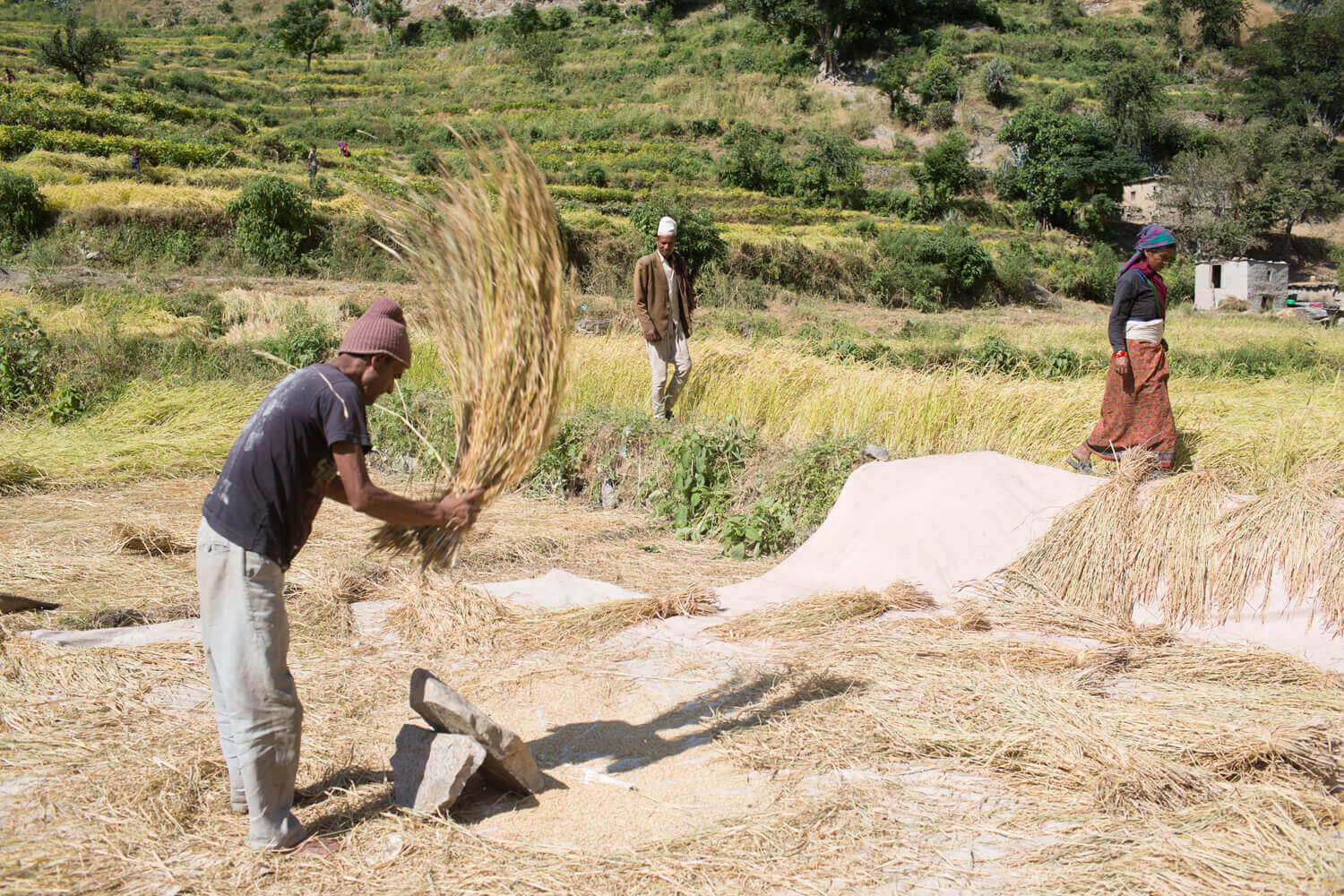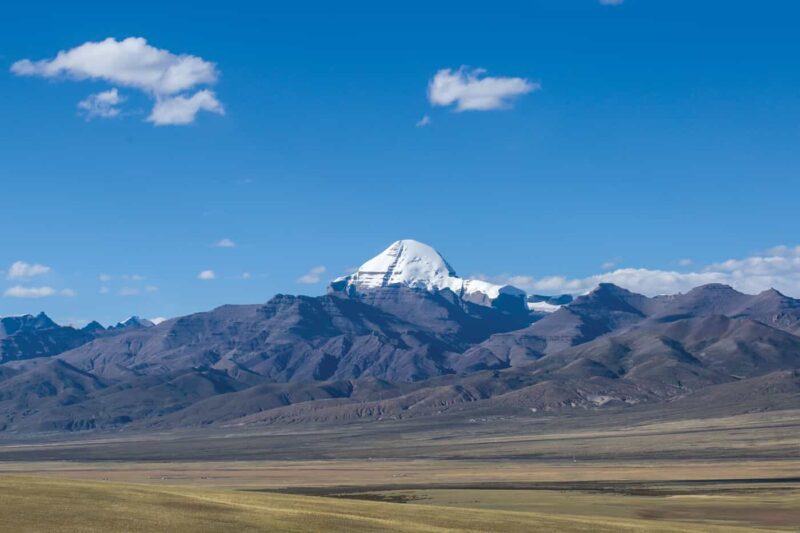“One morning in late September, as an orange lozenge of a sun rose from behind the mountains, Indian pilgrims chanted prayers to Shiva on the shores of Lake Mansarovar.”
That’s how EJN’s South Asia Content Coordinator Ramesh Bhushal writes about the beginning of his 1,100-kilometer journey from the source of the Karnali River in southwest Tibet to its confluence with the Ganga River in India.
Over six weeks, Bhushal, photographer Nabin Baral and a team of scientists traveled by jeep, raft and foot through some of the most remote areas of the Himalayas to produce a five-part series published last month that documents the environmental and economic changes transforming the Karnali River system and the challenges people living near its banks are facing.
Along the way they collected photographs and videos to convey their experience in vivid detail and captured stories from those living along the route who seldom have the opportunity to have their voices heard.
“We are so far away no one listens to us,” Pema Aangmo, who operates a lodge for pilgrims and tourists in the far-flung border town of Hilsa in Nepal, said about the government’s neglect of places like her home.
In addition to environmental experts and officials, Bhushal spoke with farmers whose crops had been destroyed by too much rainfall or unseasonable heat and families displaced by severe and repeated flooding.

Among the challenges, he writes, are too little development or the kind of development that causes concerns, such as hydropower dams and roads that could destabilize a region already bearing the brunt of climate change’s impacts.
“Nepal’s move towards big dams has come at a time when scientists warn that more extreme weather, events like floods and landslides, will increase in the already fragile mountains in the region,” Bhushal writes.
A recent report by the International Center for Integrated Mountain Development describes how melting glaciers caused by global warming will result in dire consequences for nearly two billion people, from those living in the mountains to those in areas downstream. Chinese studies show the Tibetan plateau is warming three times faster than other parts of the world. People living in the region are feeling those impacts directly, Bhushal’s reporting shows.
“The weather is becoming more uncertain every year, so I have to harvest during these sunny days. Who knows what will happen tomorrow,” Devi Fadera, a farmer from Srinagar village in Nepal’s Humla district, told Bhushal as he rushed to harvest ripening rice in early October.
Climate change impacts communities in different ways and at different scales depending upon where they’re located and their ability to respond, Bhushal says. “Getting people and governments involved and engaged is urgently needed to bring peace and prosperity to the region and strike a balance with nature and development,” he adds.
In-depth reporting across such a large scale and geography is one way of helping people better understand environmental problems as well as the river’s cultural, religious and ecological value rather than just the economic benefits that can come from large-scale hydropower schemes or other infrastructure.
“While rivers run from one country to another, witness a range of cultures and serve millions of people, there has to be better understanding about the changes happening within the river systems,” Bhushal says.
The Karnali series was published over a week starting Jan. 7 in the Nepali Times and The Third Pole, where Bhushal serves as Nepal editor.
Since then it has been widely shared in Nepal and across the region and has drawn attention from a number of other news outlets, including First Post, an online publication in India with millions of followers on social media.
Radio Free Asia in Washington D.C. interviewed Bhushal about his journey for a report broadcast through its Tibetan language service and the Nepal-based Antenna Foundation, an independent media development organization, broadcast an interview to several local radio stations across the country.
Bhushal has also been invited to give a talk on Feb. 27 as part of a debate series organized by the Society of the Karnali River.
The rare coverage has ignited debate about several issues that needs to be taken into consideration, he explains.
“Much of the information provided was new to people, as it’s quite an inaccessible area due to remoteness in Nepal and rules and regulations that restrict access to parts of Tibet,” Bhushal says. “The promotion shows that there is real value in these kinds of long-form reporting.”
That’s something to which Bhushal is no stranger. With the support of EJN and its South Asia partner, The Third Pole, he produced a series in 2016 on the Koshi River in eastern Nepal, and in 2017 he traversed the border between Nepal and China to report on a rail project that will link Nepal with all of South Asia, part of Beijing’s multi-trillion dollar, infrastructure-focused Belt and Road Initiative.
Bhushal hopes to work on similar cross-border stories in the future.
“EJN, with such a strong global network, with regional partners, has a very important role to play in linking journalists in different countries and providing support so that they can work together to dig out more on trans-boundary issues,” he says. “While governments are at political loggerheads, journalists can work together to bring out stories that will help readers understand the issues in a better way and push governments for better cooperation.”
View a photo essay of the Karnali River
(Banner photo: Mount Kailash in southwestern Tibet is the source of some of the largest rivers in Asia. Kailash is also revered as a holy place by Hindus, Buddhist, Bons and Jains. Credit: Nabin Baral)
